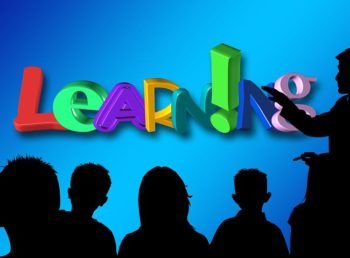Helping Kids with ADHD Focus: Classroom and Home Strategies
 Helping Kids with ADHD Focus: Classroom and Home Strategies
Helping Kids with ADHD Focus: Classroom and Home Strategies
As a special education teacher, I’m frequently asked to observe students who appear to be distracted. As teachers, we can’t diagnose but we can find ways to support students who struggle in the classroom, regardless if it’s ADHD.
Today’s classrooms are not what many think, learning is hard and standards must be met, so students spend more time sitting than moving around. Students’ minds move fast, their energy levels fluctuate, and traditional learning environments don’t always meet their needs. Parents often ask, “How can I help my child focus better?”
Understanding ADHD in the Classroom
Children with ADHD often experience:
- Difficulty maintaining attention (especially on non-preferred tasks)
- Impulsivity (blurting out answers, interrupting, acting before thinking)
- Hyperactivity (constant movement, fidgeting, trouble staying seated)
- Executive functioning struggles (organizing materials, following multi-step directions, remembering assignments)
It is important to note that the term “ADD” changed to “Attention-Deficit/Hyperactivity Disorder” (ADHD) in 2013 with the release of the DSM-52. The official change in terminology occurred with the publication of the DSM-IV in 1994.
What can teachers do within their classrooms?
1. Provide Movement Breaks
Sitting still for long periods is difficult for students with ADHD. Movement can help them focus.
- Allow short brain breaks (e.g., stretching, jumping jacks) between activities.
- Use alternative seating options like standing desks, wobble stools, or yoga balls.
- Let students move while they learn, such as walking while reading or using hand motions for new concepts.
2. Offer Flexible Seating and Workspaces
Some students focus better in quiet spaces, while others do better with background noise.
What Teachers Can Do:
- Create a variety of seating options—quiet corners, floor cushions, or desks with dividers.
- Allow students to choose where they work best for certain tasks.
- Use noise-canceling headphones for students who are easily distracted by sound.
3. Break Down Tasks into Small Steps
Many students with ADHD struggle with multi-step directions.
What Teachers Can Do:
- Give one instruction at a time instead of a long list.
- Use visual checklists to help students stay on track.
- Offer frequent feedback to keep them engaged and motivated.
4. Use Visual and Hands-On Learning Tools
What Teachers Can Do:
- Use graphic organizers to help with writing and reading comprehension.
- Incorporate hands-on activities (e.g., manipulatives in math, science experiments, or interactive notebooks).
- Use color-coding to help with organization (e.g., different colors for subjects or materials).
5. Build Predictable Routines
Changes in routine can be difficult for students with ADHD.
What Teachers Can Do:
- Establish clear daily schedules with visual schedules or timers.
- Give transition warnings before switching activities.
- Maintain consistent classroom rules and expectations.
6. Provide Positive Reinforcement
Students with ADHD often receive negative feedback for their behavior, which can lower self-esteem.
What Teachers Can Do:
- Use praise and rewards for effort, not just accuracy.
- Create a positive behavior system (e.g., sticker charts, token rewards).
- Focus on strengths, such as creativity, problem-solving, and enthusiasm.
7. Allow for Fidget Tools
Fidgeting is a way students with ADHD self-regulate and stay engaged.
What Teachers Can Do:
- Provide fidget tools like stress balls, putty, or small hand-held items.
- Allow doodling or note-taking during lessons to help with focus.
- Set clear rules for using fidgets appropriately (e.g., not distracting others).
What can parents do?
1. Establish a Structured Homework Routine
Homework can feel overwhelming for kids with ADHD, but structure helps.
Tips for Parents:
- Set up a consistent workspace that is quiet and free from distractions.
- Use a visual schedule to outline tasks and break them into small steps.
- Incorporate movement breaks (e.g., 5 minutes of jumping or stretching between assignments).
2. Use Timers and Alarms
Students with ADHD often lose track of time, so timers help them stay on task.
Tips for Parents:
- Use a visual timer (like a Time Timer) to show how much time is left for a task.
- Set a “beat the timer” challenge for short tasks to make it more engaging.
- Try the Pomodoro technique (25-minute work periods followed by 5-minute breaks).
3. Reduce Clutter and Improve Organization
Disorganization makes focusing even harder for students with ADHD.
Tips for Parents:
- Use color-coded folders for different subjects.
- Create a designated homework station with necessary supplies.
- Help your child clean their backpack weekly to prevent lost assignments.
4. Encourage Physical Activity
Exercise helps regulate dopamine levels, improving focus and impulse control.
Tips for Parents:
- Let your child run or play outside before starting homework.
- Consider sports, martial arts, or activities like yoga that improve focus.
- Use active learning strategies (e.g., bouncing a ball while spelling words).
5. Implement a Reward System
Positive reinforcement can help kids stay motivated.
Tips for Parents:
- Use a simple point system (e.g., earning stars for completed tasks).
- Allow your child to “cash in” points for small rewards (e.g., extra screen time, a special outing).
- Praise effort over results to build confidence.
6. Teach Self-Regulation Strategies
Kids with ADHD benefit from learning how to manage their emotions and energy levels.
Tips for Parents:
- Teach deep breathing and mindfulness exercises.
- Use calm-down corners with sensory tools like weighted blankets or stress balls.
- Help them identify what strategies work best for them (e.g., chewing gum, listening to music).
7. Work with the School
Communication between home and school is key to helping students with ADHD succeed.
Tips for Parents:
- Regularly check in with teachers about what’s working and what’s not.
- Advocate for an IEP or 504 Plan if your child needs accommodations.
- Keep track of patterns and triggers that may be impacting your child’s focus.
Kids with ADHD are not lazy, unmotivated, or “bad” students. They simply need the right strategies and support to reach their potential. By making small adjustments—both in the classroom and at home—we can help them develop focus, confidence, and a love for learning.
 Strategies to Help Your Child Love School Again (Part 2)
Strategies to Help Your Child Love School Again (Part 2) Why Your Child Hates School (Part 1)
Why Your Child Hates School (Part 1) What Does Your School’s Student Performance Data Mean?
What Does Your School’s Student Performance Data Mean? Special Education Parents Provide School Support and Leadership
Special Education Parents Provide School Support and Leadership